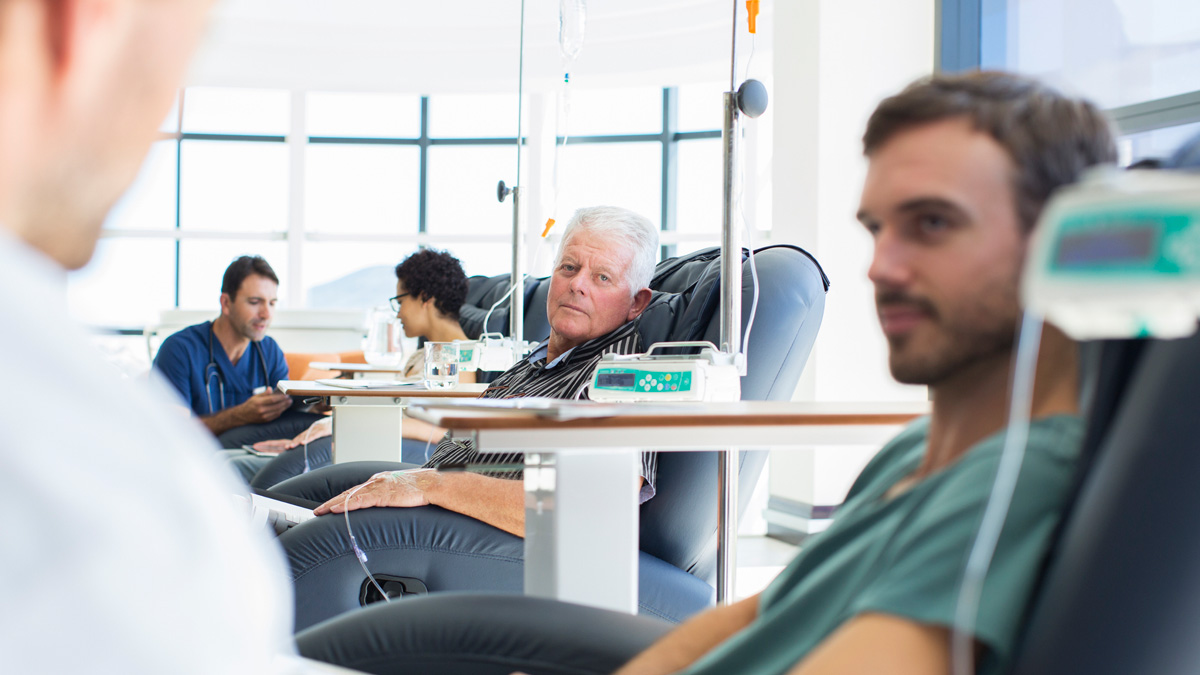Are timely access and robust safety mutually exclusive?

The FDA approves new cancer treatments in half the time of the EMA – but does faster mean better? And how can regulators balance timely access with robust safety?
Cancer patients in Europe wait an average of almost eight months longer for access to breakthrough medications than their American counterparts.
A new cross-sectional study has found that the FDA green lit 95% of the 89 new oncology therapies approved between 2010 and 2019 before the EMA, with the Europeans trailing the Americans by a median of 241 days.
Yet, three of the 19 drugs given the go ahead in the US were later withdrawn, compared to just one in the EU, prompting some to ask if faster approval times merely represent “quantity over quality”.
Delayed access
The past decade has seen huge advances in cancer therapy, with a swathe of first-in-class or breakthrough therapies being developed. Such rapid evolution has not been confined to oncology, and regulators, in a bid to ensure timely access, have been quick to develop accelerated review pathways.
The FDA’s Breakthrough Designation and the EMA’s Priority Medicines and PRIME initiatives, for example, allow approvals to made on the basis of less comprehensive clinical data on the proviso that confirmatory data are submitted when they become available.
To understand how these programmes had differently impacted the world’s two biggest regulators, researchers from Imperial College London identified 89 oncology therapies approved in both the US and Europe between 2010 to 2019.
They found that the FDA approved 85 (95%) of the drugs before the EMA, with the latter clocking up a median delay of 241 (150-370) days.
But while the figures may sound stark, they come as no surprise to the industry.
A European Federation of Pharmaceutical Industries and Associations (EFPIA) report published earlier this year, for example, compared the timelines of six regulatory agencies between 2011 and 2020. It found the EMA “lagged behind” most, with a median approval time in 2020 of more than 400 days. “Apart from Swissmedic, this is longer than other regulator,” said the report.
An abundance of caution?
Rapid access, however, is only half the story, and Europe’s longer approval timelines could point to a more cautious approach to approval.
“The balance between shortening approval times, allowing oncology patients to receive therapies earlier, and ensuring treatments are safe and efficacious is delicate,” said the paper.
It found that 19 of the 31 drugs (61%) that received FDA accelerated approval went on to receive regular approval. Of the remaining drugs, three (10%) were withdrawn, and nine (29%) still have accelerated approval status, with confirmatory trial results pending.
Of the 23 that received conditional marketing authorization in Europe, 10 (43%) went on to receive regular approval, and just one (4%) was withdrawn. The remaining 12 still have confirmatory trial results pending.
It is also worth noting that previous studies have shown drugs with FDA-accelerated approval are twice as likely to receive a black box warning or be withdrawn from market than those with EMA accelerated approval.
Kristina Jenei, public health researcher at the University of British Columbia’s School of Population and Public Health, suggested the study’s results could constitute “quantity over quality”
In an invited commentary, published in JAME Network Open alongside the Imperial paper, she said: “Over the past decade, the FDA approved oncology drugs twice as fast as the EMA, more often through accelerated pathways, and often prior to study publication.
“The speed of review times and increasing number of FDA-approved cancer medicines has long been used as a metric for successful regulatory processes and improvements in patient outcomes. But do quicker review times result in better outcomes for patients, such as meaningful improvements in survival and quality of life?”
Although the speed of FDA review times and subsequent number of approvals have increased over time, the proportion of cancer drugs that improve survival has declined, she said.
“Furthermore, although other countries approve fewer medicines than the US, available therapies tend to offer more benefit to patients.”
One study, for example, found 48 of 78 drugs (61.5%) recommended by the pan-Canadian Oncology Drug Review between 2011 and 2020 demonstrated substantial clinical benefit, as measured by the ESMO Magnitude of Clinical Benefit Scale,. That compared with 43.8% (46 of 105) of FDA approvals in the same period
While review times are longer in Europe, data for overall survival is more likely to be available when the decision is being made, which considerably reduces uncertainty regarding the magnitude of clinical benefit, added Jenei.
Accelerating safe access
Timely access and robust safety, however, are not mutually exclusive, and the EFPIA has already made a number of recommendations which it believes would achieve both.
Its January 2022 Evidence Mix report, for instance, called for a more agile, centralised framework that removes “unnecessary interfaces” between the European Commission, EMA, working parties, and committees, and allows member states to “bring forward their expertise”.
This collaborative approach is also recommended in the Imperial paper, which points to the “considerable overlap” between review processes and the “potential synergy” that could be gained by harmonizing therapy approval across the FDA, EMA, and other regulators.
The ultimate goal, everyone agrees, has to be accelerating access while still maintaining the highest levels of safety.
“The past decade has seen record numbers of new oncology therapy authorizations in the US and Europe. It is critical that medicine regulators undertake rigorous scientific review of all new therapies to ensure efficacy, safety, and public confidence in cancer medicines,” the authors concluded.
About the author
 Amanda Barrell is a freelance health and medical education journalist, editor and copywriter. She has worked on projects for pharma, charities, and agencies, and has written extensively for patients, HCPs and the public.
Amanda Barrell is a freelance health and medical education journalist, editor and copywriter. She has worked on projects for pharma, charities, and agencies, and has written extensively for patients, HCPs and the public.












